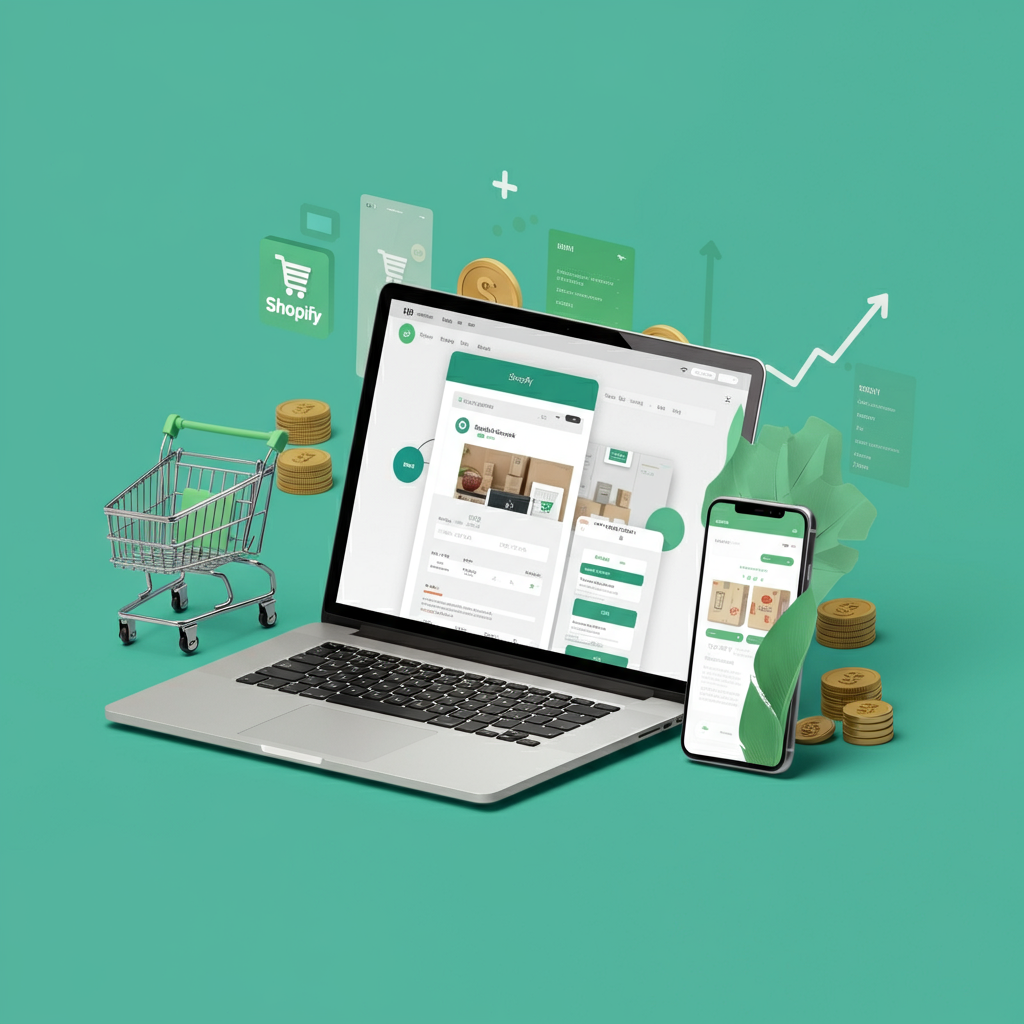Change can be scary. We get it. Your Sellerdeck store has been your digital home for years, maybe even decades. You know where everything is, you’ve customised it to your heart’s content, and it’s been faithfully serving your customers. So why would you even think about uprooting everything and starting fresh on Shopify?
Here’s the thing: staying put when technology moves forward is a bit like insisting on using a Nokia 3310 in 2025. Sure, it still makes calls, but you’re missing out on everything that makes modern life easier. The truth is, migrating from Sellerdeck to Shopify isn’t just about keeping up with trends—it’s about positioning your business for genuine long-term success.
Many store owners worry about the disruption, the cost, or whether they’ll lose everything they’ve built. These concerns are completely valid, but they shouldn’t hold you back from making a move that could transform your business. Let’s explore why making this leap is one of the smartest investments you can make for your online store’s future.
Section 1: Sellerdeck Limitations
Sellerdeck served the e-commerce world well in its heyday, but technology has moved on, and unfortunately, some platforms haven’t kept pace. If you’re still running on Sellerdeck, you’ve probably noticed a few frustrations creeping in. Let’s address the elephant in the room.
Mobile Usability Problems
Remember when people browsed the internet primarily on desktop computers? Those days are long gone. Today, more than 70% of online shopping happens on mobile devices. Unfortunately, many Sellerdeck stores struggle to deliver a seamless mobile experience.
The responsive design capabilities are limited, often resulting in websites that look cramped, load slowly, or require endless zooming and scrolling on smartphones. When your potential customers are trying to buy from you on their phones during their lunch break, and your site is fighting them every step of the way, they’ll simply go elsewhere. It’s not personal—it’s practical.
This mobile problem isn’t just about user experience; it directly impacts your search engine rankings. Google prioritises mobile-friendly websites, so if your Sellerdeck store isn’t delivering on mobile, you’re losing visibility in search results too.
Maintenance Headaches
Here’s where things get particularly frustrating. Sellerdeck requires significant ongoing maintenance to keep running smoothly. Updates aren’t automatic, which means you’re constantly juggling manual updates, compatibility checks, and troubleshooting.
Every time you want to add a new feature or integrate with a modern service, it becomes a technical challenge. Need to connect with Instagram Shopping? Want to add live chat? Planning to implement advanced analytics? Each of these seemingly simple additions can turn into complex custom development projects.
Then there’s the hosting situation. You’re responsible for server management, security updates, backups, and ensuring everything stays online. It’s like being a part-time IT department for your own business, which is time you could be spending on actually growing your store.
High Upgrade Costs
When you do decide to make changes or upgrades to your Sellerdeck store, the costs can be eye-watering. Because the platform isn’t designed for easy customisation, even small changes often require custom development work.
Want a new checkout process? That’s a custom job. Need better inventory management? Another custom project. Planning to integrate with your accounting software? You guessed it—more custom development. These costs add up quickly, and you end up paying premium prices for features that come standard on modern platforms.
The licensing costs for Sellerdeck itself aren’t cheap either, especially when you factor in the additional expenses for hosting, security, and maintenance. You might find yourself paying more to maintain an outdated system than you would to run a cutting-edge one.
Section 2: Shopify Advantages
Now let’s flip the script and look at what life could be like on Shopify. It’s not just about having a newer platform—it’s about having a platform that’s designed for the realities of modern e-commerce.
Mobile-First Design
Shopify was built with mobile in mind from day one. Every theme, every feature, every update is designed to work beautifully on smartphones and tablets. This isn’t an afterthought—it’s fundamental to how the platform works.
When your customers land on your Shopify store from their phones, they get a smooth, fast, intuitive shopping experience. Large, tappable buttons, streamlined navigation, and lightning-fast checkout processes all work together to turn browsers into buyers. The result? Higher conversion rates and happier customers.
This mobile-first approach also means Google loves your site. Shopify stores typically score well on Google’s mobile usability tests, which translates directly into better search engine rankings and more organic traffic.
Continuous Updates
One of the biggest advantages of Shopify is that you never have to worry about being left behind. Shopify’s team is constantly rolling out improvements, security updates, and new features—and they all happen automatically in the background.
While you’re sleeping, your store is getting better. New payment methods are added, security patches are applied, and performance improvements are implemented. You wake up to a more capable, more secure, more modern store without lifting a finger.
This continuous evolution means your store stays current with e-commerce trends and customer expectations. New social commerce features, advanced analytics, improved SEO capabilities—they all just appear in your admin panel when they’re ready.
Robust App Ecosystem
Here’s where Shopify really shines: the app ecosystem. Need email marketing? There’s an app for that. Want advanced inventory management? Multiple apps to choose from. Planning to add subscription services, loyalty programmes, or advanced reporting? The Shopify App Store has you covered.
Most of these integrations take minutes to set up, not months of custom development. You can test new features, add capabilities as your business grows, and remove what doesn’t work—all without calling a developer.
The app ecosystem also means you’re not locked into any single solution. If you don’t like your current email marketing app, you can switch to a different one without rebuilding your entire system. It’s flexibility that scales with your ambitions.
Section 3: Real Client Stories
Nothing speaks louder than real results from real businesses. We’ve helped dozens of companies make the leap from Sellerdeck to Shopify, and the transformations have been remarkable.
Performance Gains That Matter
Take Sarah, who runs a boutique clothing store. Her Sellerdeck site was taking nearly 8 seconds to load on mobile—an eternity in e-commerce terms. After migrating to Shopify with a properly optimised theme, her load times dropped to under 2 seconds. The result? Her mobile conversion rate increased by 145% in the first three months.
Another client, a specialty electronics retailer, saw their bounce rate drop from 78% to 23% after migration. Customers were actually staying on the site, browsing products, and making purchases instead of giving up in frustration.
These aren’t just numbers—they represent real revenue. Faster sites convert better, and better conversions mean more profit. It’s that simple.
Cost Savings That Add Up
Here’s something that might surprise you: many of our clients actually spend less on their monthly e-commerce costs after migrating to Shopify, despite getting significantly more functionality.
One client was paying £300 per month for Sellerdeck hosting, plus another £150 for various third-party services that didn’t integrate well. After moving to Shopify, their monthly costs dropped to £240 total, and that included better hosting, automatic backups, security monitoring, and access to hundreds of apps.
The maintenance savings are even more dramatic. Instead of budgeting £2,000-£5,000 per year for updates and fixes, they now spend that money on growth initiatives like better marketing or new product lines.
Scalability Improvements
Perhaps the most exciting client story comes from a home goods retailer who had been stuck at around £50,000 in monthly sales on Sellerdeck. Their old platform simply couldn’t handle the traffic spikes that came with successful marketing campaigns, and they were losing sales during their busiest periods.
After migrating to Shopify, they were able to handle their first £100,000 sales month without a single technical hiccup. The platform scaled effortlessly with their success, and they’ve continued growing ever since. Last month, they hit £180,000 in sales—growth that simply wouldn’t have been possible on their old platform.
Section 4: Migration Process
The thought of migrating might seem overwhelming, but when broken down into clear steps, it’s much more manageable than you might expect. Here’s how we approach every migration project.
Analysis: Understanding What You Have
The first step is taking a complete inventory of your current Sellerdeck store. We examine your products, customer data, order history, blog content, and SEO performance. This isn’t just about moving data—it’s about understanding your business so we can make it better in the process.
We identify which elements are working well and should be preserved, and which ones could be improved during the migration. This analysis phase typically takes 1-2 weeks and forms the blueprint for everything that follows.
Redesign: Building Something Better
Migration is the perfect opportunity to give your store a fresh look and improved functionality. We don’t just recreate your old site on a new platform—we reimagine it for modern e-commerce success.
This might mean simplifying your navigation, improving your product pages, streamlining your checkout process, or reorganising your categories. The goal is to take everything good about your current store and make it even better, while fixing the pain points that have been frustrating you and your customers.
Data Migration: Moving Everything Safely
Once the new store design is approved, we begin the careful process of moving your data. Products, customers, orders, and content all need to be transferred accurately. We use specialised tools and proven processes to ensure nothing gets lost in the translation.
This stage requires meticulous attention to detail. Product descriptions, pricing, inventory levels, customer accounts, order history—everything needs to be perfect before we flip the switch. We typically run multiple test migrations to catch any issues before they affect your live store.
SEO-Friendly Redirects: Protecting Your Rankings
Here’s the crucial part that many DIY migrations get wrong: preserving your search engine rankings. When you change platforms, all your URLs change too. If you don’t handle this properly, you can lose years of SEO progress overnight.
We create comprehensive 301 redirects that tell search engines (and your bookmarked customers) exactly where to find everything on your new site. This preserves your search rankings and ensures that traffic keeps flowing even after the migration.
Conclusion: Future-Proof Your Store and Unlock Growth
Migrating from Sellerdeck to Shopify isn’t just about fixing current problems—it’s about positioning your business for the opportunities ahead. E-commerce is evolving rapidly, with new technologies, customer expectations, and market conditions emerging constantly.
On Shopify, you’re not just keeping up with these changes—you’re staying ahead of them. Every update brings new capabilities, every app adds new possibilities, and every optimisation compounds your success.
The migration process might seem daunting, but the alternative—staying stuck on an increasingly outdated platform—is far more risky for your long-term business health. The longer you wait, the harder it becomes to make the switch, and the more opportunities you miss.
Your business deserves a platform that grows with you, supports your ambitions, and makes your life easier instead of harder. That’s exactly what Shopify offers, and that’s why migration isn’t just smart—it’s essential.
At Media Mole, we don’t just migrate stores; we transform them. Our team combines deep technical expertise with proven e-commerce strategy to ensure your migration isn’t just successful—it’s transformational. We handle every detail, from preserving your SEO rankings to optimising your new store for maximum conversions. When you’re ready to future-proof your business and unlock its true potential, Media Mole is your first choice for Shopify migration and ongoing success.

